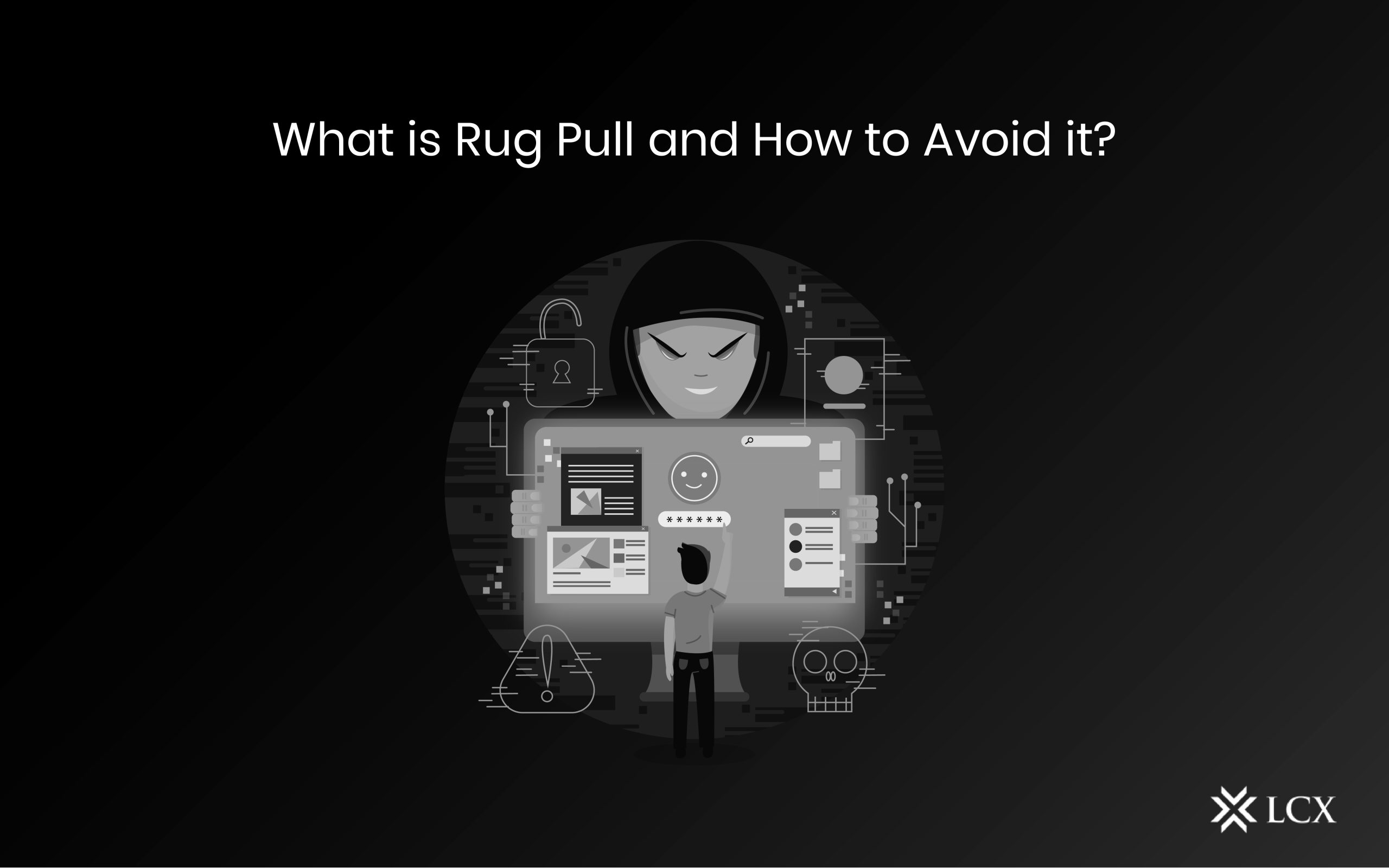
Ever since its emergence, the crypto industry has seen tremendous growth. Today, investing in cryptocurrency has the potential to generate more returns than any other investment. But as an investor, one has to be careful of the numerous frauds and scams associated with this industry. Recently, a new scam has surfaced in the crypto world, causing significant consequences for investors. This scam is called “Rug Pull.”
What is a Rug Pull?
A new scam in the crypto industry has been named “rug pull.” This name is given in association with “pulling the rug out.” It involves a developer luring investors to a new cryptocurrency project, then abandoning investors with a worthless currency before the project is completed.
Rug pulls are prevalent in decentralized finance projects that attempt to disrupt industries like banking and insurance. They have recently entered the NFT projects too.
The recent rug pulls were the SQUID game token rug pull (2021), where the token price increased 23 million percent within a week, and the thodex scam (2021), where its CEO flew with the 2 billion dollars in user fund, denying the users from accessing it.
To avoid such scams, it is important to invest or trade in cryptocurrencies at trustworthy and regulated crypto marketplaces such as LCX. LCX provides you with LCX Exchange, LCX DeFi Terminal, and LCX Terminal, and that too within a secured environment. This is because LCX has gained regulatory approval for 8 major registrations in accordance with the blockchain laws by the Financial Market Authority Liechtenstein. Thus, one can enjoy their secured and successful crypto journey with LCX exchange.
Types of Rug Pulls
- Liquidity Stealing: When token creators extract all of the coins from the liquidity pool, this is known as liquidity stealing. This effectively destroys all of the value that investors have invested in the currency, driving its price to zero.
- Limiting sell orders: In this case, the tokens are coded by the developers so that they are the only ones who may sell them. The developers then wait for retail investors to use paired currencies to buy into their new crypto. They dump their positions once there is enough favorable price action, leaving a worthless token behind.
- Dumping: When developers immediately sell off their enormous number of tokens, this is known as dumping. As a result, the price is reduced, and investors remain with worthless tokens.
How to Identify Rug Pull?
- Researching the project’s team: An asset’s founder, individual, or organization should always be investigated. Aside from spotting potential rug pulls, analyzing the team behind a cryptocurrency’s project can help establish its intrinsic value and provide all the necessary information. Anonymous project developers are a potential red flag. Furthermore, the white paper of the crypto project aids in establishing its legitimacy, as a valid and lawful cryptocurrency project’s white paper will contain all detailed information.
- No Liquidity locked: Checking if a cryptocurrency is liquidity locked is one of the easiest ways to distinguish between a scam and a legitimate cryptocurrency. Nothing prevents the project founders from increasing the token supply if there is no liquidity lock-in effect.
- Limits on sale orders: A malicious project codes a token in such a way to prevent confident investors from selling while allowing others to do so. These selling limits are typical of a scam project.
- Price explosion with a small number of token holders: Sudden substantial price swings in a new coin should be approached with caution. If the token has no liquidity, chances of a scam are prevalent.
- No external audit: New cryptocurrencies are expected to be subjected to a formal code audit by a credible third party. A third party should be able to verify the audit.
- Analyzing transaction and on-chain data: A crypto asset’s on-chain activity is available in the blockchain network. This covers recent trading volume, liquidity, and the number of DEXs registered as legitimate crypto assets. It is likely a rug pull if the project appears only in a few DEXs and has little trading activity.
- Stay calm and avoid FOMO: One of the ways that fraudulent investors set up a project to be rug-pulled is through fear of missing out. One must match the data they have with the latest asset news. Be aware that excessive advertising content can indicate rug pull as most new coins will start slowly and small.
How to Avoid Rug Pulls?
- Read and review the smart contract audit of the token. See LCX audits published by Certik.
- Check if the company does actually exist and has a registered address. E.g. LCX published an imprint which shows address, name of company and all registrations.
- Check if the management and people involved are real and do really exist. E.g. you can check if the team is on LinkedIn (LCX on LinkedIn) as well as on twitter and if names match.
- If the profits on a new coin are suspiciously high and it doesn’t turn out to be a rug pull, it’s most likely a Ponzi scam.
Conclusion
The DeFi is an exciting initiative that aspires to democratize finance and make the most lucrative opportunities available to everyone, anywhere, without any limitations. This, however, makes it vulnerable to fraudulent schemes. Maintaining vigilance and keeping your eyes open can help you have a safe and rewarding encounter. Investors can prevent these scams by conducting thorough research and looking for apparent signs. Before investing, you should always conduct your research and only invest what you can afford to lose.
"avoid it" - Google News
May 31, 2022 at 09:06PM
https://ift.tt/Bl26yM1
What Is Rug Pull And How To Avoid It? - LCX
"avoid it" - Google News
https://ift.tt/E6nN5uO
https://ift.tt/dKDIl8a

No comments:
Post a Comment